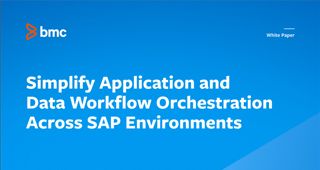Data plays an integral role in the success of modern businesses. In an SAP ecosystem, data must flow from multiple inbound and outbound sources. To make things even more complicated, gathering and processing data, and then delivering insights, often requires orchestration of data and applications across multiple SAP and non-SAP systems. And as companies enact plans to migrate from legacy SAP systems to SAP S/4HANA®, failure of critical SAP data flows can bring those digital transformation and modernization efforts to a screeching halt. Missing business modernization deadlines could have long-lasting ramifications, including additional maintenance costs and less-inclusive approaches.
Without a solid data orchestration strategy to ease the process, SAP data orchestration can get difficult quickly. Orchestrating and monitoring data flow within SAP systems is challenging due to factors like integration complexity, data quality, performance, and scalability issues. Monitoring data workflows through multiple SAP and non-SAP systems can also create a range of difficulties, from a general lack of workflow visibility to the inability to address dataflow failures in a timely manner. In addition, SAP data engineers must manage complex environments with multiple integrations and interoperability, often while trying to keep up with frequent changes in business requirements and technologies. All this work, and the troubleshooting required to find data and job failures, leads to more time and money spent to get everything back on track.
How Control-M Can Help
Control-M (self-hosted and SaaS) provides the workflow orchestration capabilities to help organizations streamline their SAP dataflows in parallel with their migration to SAP S/4HANA. As an SAP-certified solution, Control-M creates and manages SAP ERP Central Component (ECC), SAP S/4HANA, SAP BW, and data archiving jobs, and supports any application in the SAP ecosystem, eliminating time, complexity, and specialized knowledge requirements. It provides out-of-the-box visibility to all enterprise workflows and their dependencies across SAP and non-SAP source systems and de-risks the transition to SAP S/4HANA.
With unified scheduling and automation of workflows with both SAP and non-SAP systems, Control-M can help organizations greatly reduce time to value, complexity, and the requirement for specialized knowledge. It can also be used for all other enterprise jobs, services, processes, and workflows. That lets businesses using SAP build, orchestrate, run, and manage all their enterprise jobs from a consolidated, integrated platform. In addition, Control-M easily adapts to changing business and technology requirements, ensuring that data processes remain consistent across systems and platforms and aligned with organizational goals. And as resources fluctuate, Control-M can help allocate them effectively, optimizing system capability usage and reducing bottlenecks.
Control-M can serve as a comprehensive platform because of its many integrations. The solution can support all SAP versions and job types. It also supports many other enterprise workflows and has more than 100 native integrations with popular tools, including Amazon Web Services (AWS), Azure, and Google Cloud (and many of their components), Oracle, Informatica, SQL, Red Hat, Kubernetes, Apache Airflow, Hadoop, Spark, Databricks, UiPath, OpenText (Micro Focus), Alteryx, and many more.
Conclusion
Robust data orchestration is crucial to the success of your SAP workflows, especially when they include both SAP and non-SAP systems. Complexity can increase quickly, making it difficult to keep up and hard to manage, and, ultimately leading to missed service level agreements (SLAs). With Control-M, organizations can cut through complexity and have full visibility and control of their application and data workflows.
If you’re interested in learning more about how Control-M can help you with SAP dataflows and much more, check out our website, or feel free to reach out to me directly at jehangir_khan@bmc.com!







